Is Pear a Tropical Fruit? A Surprising Non-Tropical Delight!
Pears are not considered tropical fruits; they are categorized as temperate fruits because they thrive in cooler climates and do not originate from tropical regions.
Tropical fruits are typically grown in regions near the equator where the climate is warm and humid year-round. Pears, however, prefer the mild temperatures and seasonal changes found in temperate zones.
They require a period of cold in winter to trigger proper fruiting, which is not characteristic of tropical environments.
Key points include:
The pear’s necessity for a cold dormant period clearly defines it as a fruit of temperate zones, not tropical regions.
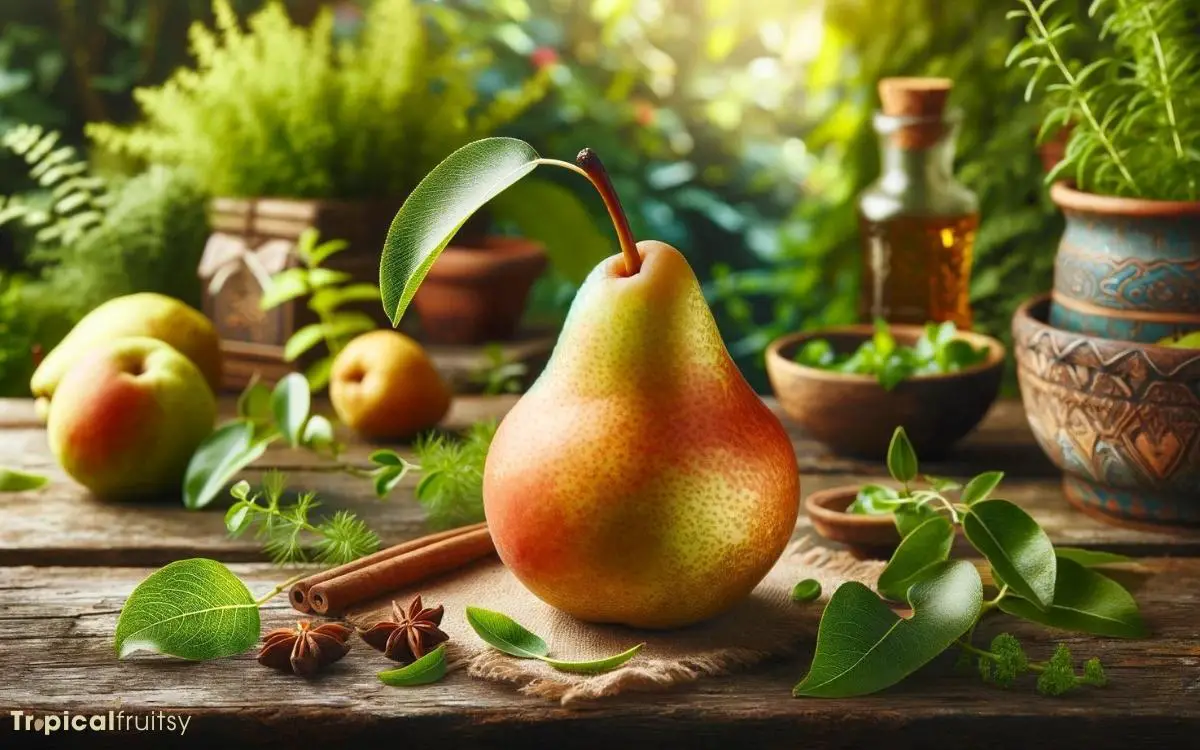
Key Takeaway
5 Climate Requirement: Is Pear a Tropical Fruit
| Climate Requirement | Pear (Temperate Fruit) | Typical Tropical Fruit |
|---|---|---|
| Temperature Range | Cool to mild, with cold winters | Consistently warm, no frost |
| Chill Hours | Required for fruiting | Not required |
| Origin | Central Asia and Europe | Equatorial regions |
| Growing Seasons | Defined seasons with winter dormancy | Year-round growth possible |
| Heat Tolerance | Limited; excessive heat impedes growth | High; thrives in heat |
Defining Tropical Fruits
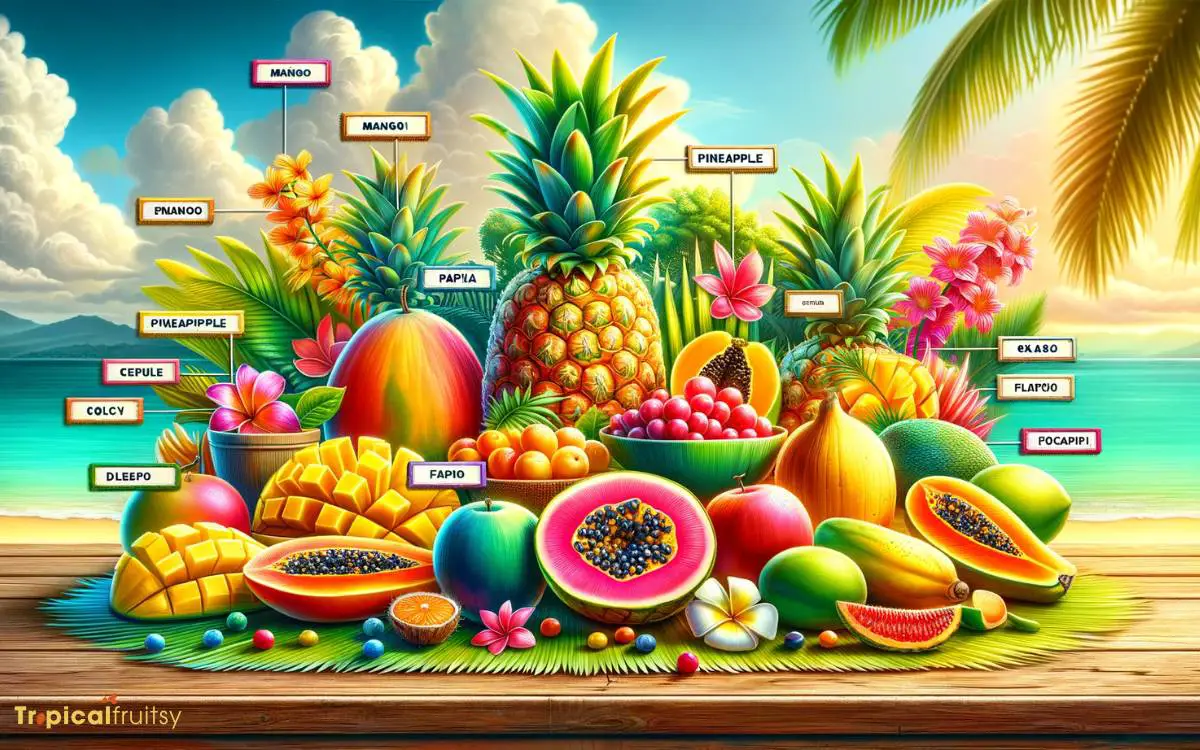
Tropical fruits, characterized by their cultivation in warm climates near the equator, include a diverse range of species such as mangoes, pineapples, and bananas.
These fruits generally require a frost-free environment with ample sunshine and high humidity to thrive.
The term ‘tropical fruit’ is not just a botanical classification but also implies agricultural practices suited to these specific environmental conditions.
Many tropical fruits have adapted to their climate with features like thick skins to prevent moisture loss or vibrant colors to attract animals for seed dispersal.
Understanding the ecological requirements and growth patterns of these fruits is essential for accurate classification and successful cultivation.
Each species has distinct horticultural needs and contributes uniquely to the diets and economies of tropical regions.
Pear Varieties Worldwide
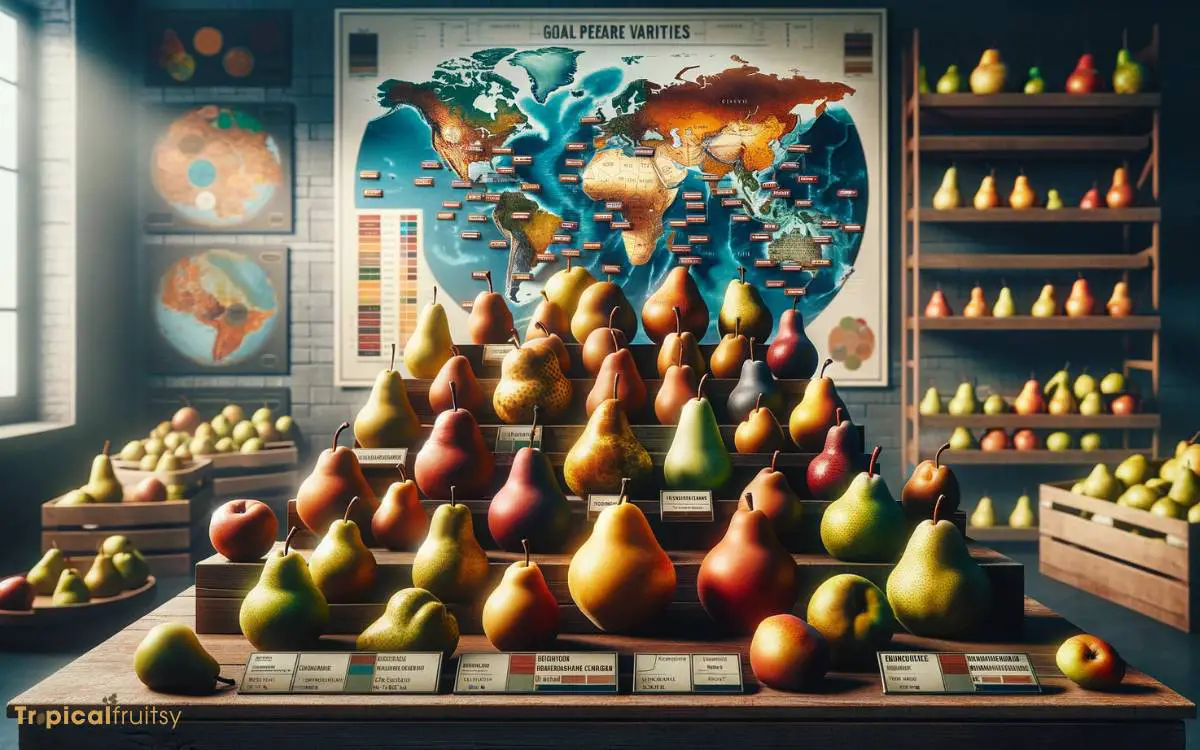
Pears, with their diverse range of flavors and textures, are cultivated in various climates and regions around the globe, creating a rich tapestry of varieties.
The regional differences in pear cultivation lead to distinct characteristics in each variety, from the crisp and succulent Bartlett pears commonly grown in North America to the buttery smooth texture of the European Comice.
Exploring these popular pear types provides insight into the agricultural practices and consumer preferences that shape the global pear market.
Regional Pear Differences
Across the globe, over 3,000 varieties of pears are cultivated. Each variety is adapted to its regional climate and showcases a distinct flavor and texture profile.
In temperate regions, such as North America and Europe, the ‘Bartlett’ pear is highly favored. It is known for its sweet and juicy characteristics, making it ideal for both fresh consumption and canning.
Conversely, Asian countries like China and Japan prefer the ‘Nashi’ pear, also known as Asian pear. This variety is known for its crisp texture and high water content, which makes it perfect for raw consumption.
In South Africa, the ‘Forelle’ pear is prized for its unique red lenticel spotting and sweet, spicy flavor.
Each variety represents a cultural preference and agricultural adaptation, reflecting the diverse horticultural practices and consumer tastes around the world.
With so many varieties, a few have risen to popularity. This brings us to discussing the most popular pear types.
Popular Pear Types
Humanity’s love for pears has cultivated a diverse range of popular varieties, each with its own unique characteristics and regional adaptations.
These cultivars vary widely in flavor, texture, size, and color, responding to the demands of different palates and climates around the world.
Here are three noteworthy types:
- Bartlett: Known for its classic pear shape and sweet, juicy flavor, it’s a favorite for both fresh eating and canning.
- Bosc: Distinguished by its elongated shape and russeted skin, Bosc pears offer a crisp, honeyed taste and are often used in baking.
- Anjou: Available in both green and red varieties, Anjous are versatile, with a slightly firmer texture perfect for snacking or cooking.
Understanding the nuances of these popular pear types primes us for a deeper exploration into the climates that best support their growth.
Pear Growing Climates
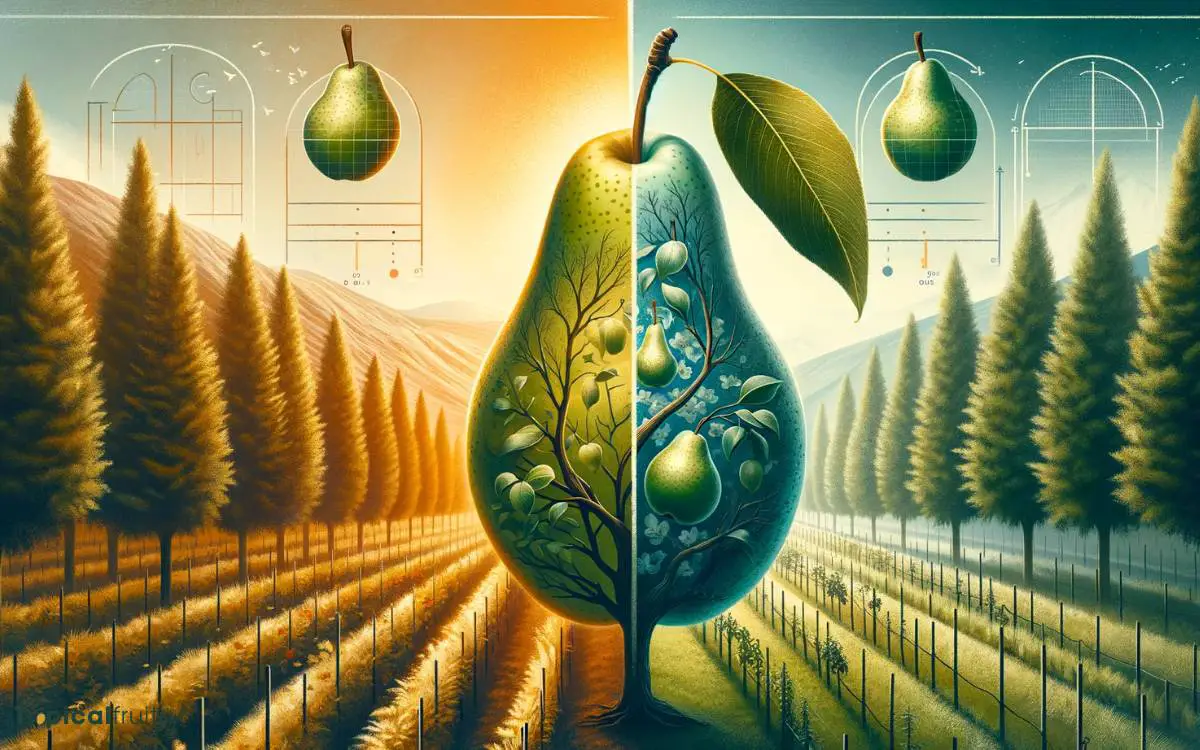
The optimal climate for cultivating pears typically involves cool winters and warm summers, conditions not characteristic of tropical regions.
Pear trees flourish in temperate zones where a period of dormancy, induced by colder temperatures, is essential for bud development.
Additionally, moderate summer temperatures promote proper fruit maturation without the risk of heat stress which can impede the growth process and fruit quality.
To illustrate the diversity of climates suitable for pear cultivation, consider the following table:
| Climate Zone | Winter Temperature | Summer Temperature |
|---|---|---|
| Temperate | Below 45°F (7°C) | 75°F – 85°F (24°C – 29°C) |
| Subtropical | 45°F – 60°F (7°C – 15°C) | 85°F – 95°F (29°C – 35°C) |
| Coastal | Above 60°F (15°C) | 65°F – 75°F (18°C – 24°C) |
| Mountainous | Variable, often below freezing | Mild summer temperatures |
Each climate zone presents unique challenges and benefits, but all fall outside the tropical fruit classification due to their cooler winter requirements.
Characteristics of Tropical Fruits
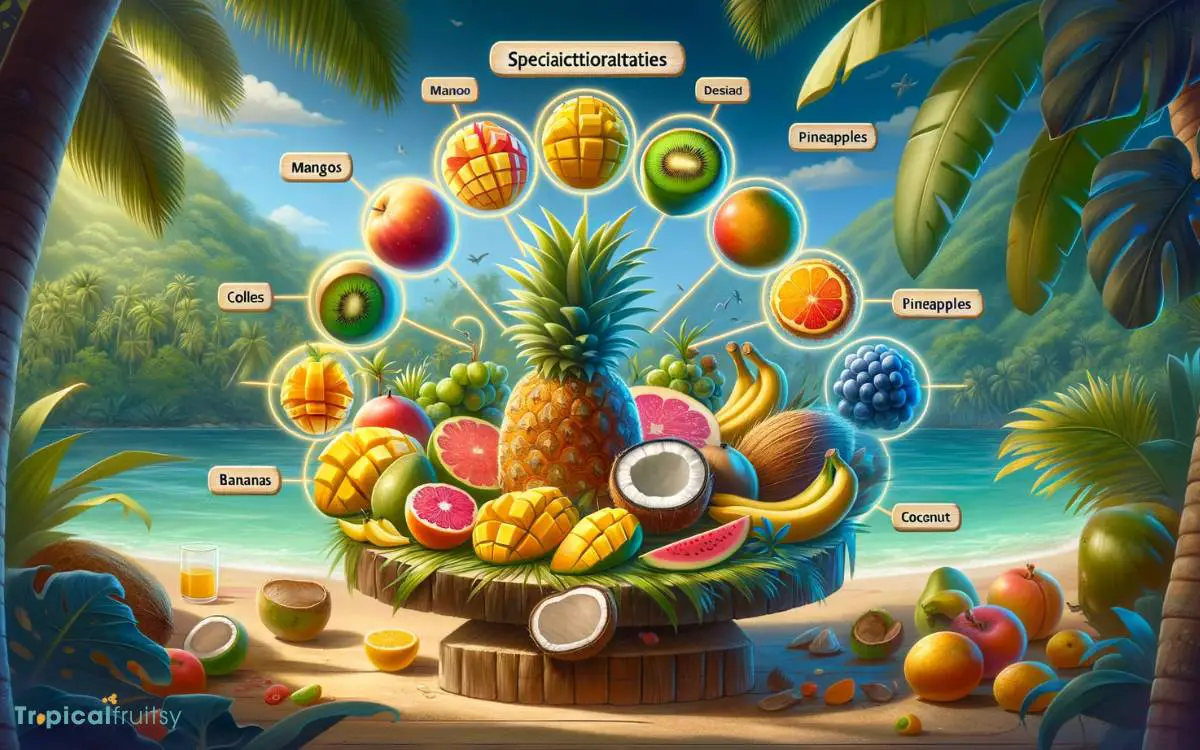
Tropical fruits are predominantly cultivated in regions that offer a warm and humid climate, with consistent temperatures favoring their growth year-round.
These fruits often possess distinctive flavor profiles, marked by a rich sweetness and vibrant acidity that set them apart from temperate counterparts.
The specific growth environment conditions, including ample rainfall and fertile soils, are crucial for the development of their unique textures and taste nuances.
Climate Requirements
Many tropical fruits, including mangoes, pineapples, and bananas, necessitate a consistently warm climate with minimal temperature variation to thrive.
These fruits have adapted to their native equatorial environments, which provide the necessary conditions for their growth and development. The climate requirements for tropical fruits are distinct and crucial for their success.
- Warm Temperatures: Tropical fruits require average temperatures typically above 18°C (65°F) without frost occurrence.
- High Humidity: They flourish in environments with high humidity levels, which aid in hydration and prevent desiccation.
- Rainfall Patterns: Adequate and well-distributed rainfall throughout the year is essential for tropical fruits, as it ensures a consistent water supply for these moisture-loving plants.
Understanding these climate requirements is fundamental for successful cultivation and indicates why certain fruits, such as pears, might not be categorized as tropical.
Distinctive Flavor Profiles
In contrast to the subtle sweetness of pears, tropical fruits typically exhibit bold and complex flavor profiles, often characterized by a balance of sweetness, acidity, and sometimes a hint of spice or tanginess.
Mangoes, for instance, can deliver a rich, creamy sweetness coupled with a vibrant tartness, while pineapples provide a robustly sweet and sour experience that is unmistakably zesty.
The jackfruit’s intricate taste is a blend of apple, pineapple, mango, and banana notes, creating a unique tropical flavor symphony. Passion fruit has an intense aromatic quality with a sharp, refreshing acidity.
These diverse palate experiences are a result of the distinct chemical compounds that develop within the fruits due to their growth environment conditions, which will be explored in the following section.
Growth Environment Conditions
Understanding the specific climatic requirements of tropical fruits reveals why their flavor profiles are so distinctive and why they differ from temperate fruits like the pear.
Tropical fruits flourish in conditions that are markedly different from those enjoyed by fruits of temperate regions.
These conditions not only shape their growth and development but also contribute to the unique sensory attributes that make tropical fruits highly sought after worldwide.
- Consistent Warmth: Tropical fruits require year-round warm temperatures, typically without frost, to thrive.
- High Humidity: A humid environment is crucial for tropical fruits, aiding in their proper growth and fruit development.
- Abundant Rainfall: Regular and ample rainfall is necessary to meet the water needs of these fruits, often resulting in juicier and more vibrant produce.
The intersection of these climatic factors fosters the creation of luscious and aromatic fruits that define the tropical fruit category.
Historical Origins of Pears

The cultivation of pears dates back to ancient times, with evidence suggesting their consumption in prehistoric periods.
Archeological findings indicate that pears were valued by humans for their sweet, succulent flesh thousands of years before written records began.
Originating in Western Asia and in the mountainous regions of China, pears have been cultivated since at least 1000 BCE.
Their cultivation spread through the ancient world, becoming a staple in the diets of Greeks and Romans, who also developed advanced horticultural techniques to improve pear varieties.
The pear’s journey across continents and through civilizations underscores its agricultural significance.
As we delve further into the pear’s historical journey, its nutritional contributions to human diets across ages become equally compelling, inviting a comparison of its nutritional profiles with other fruits.
Nutritional Profiles Compared
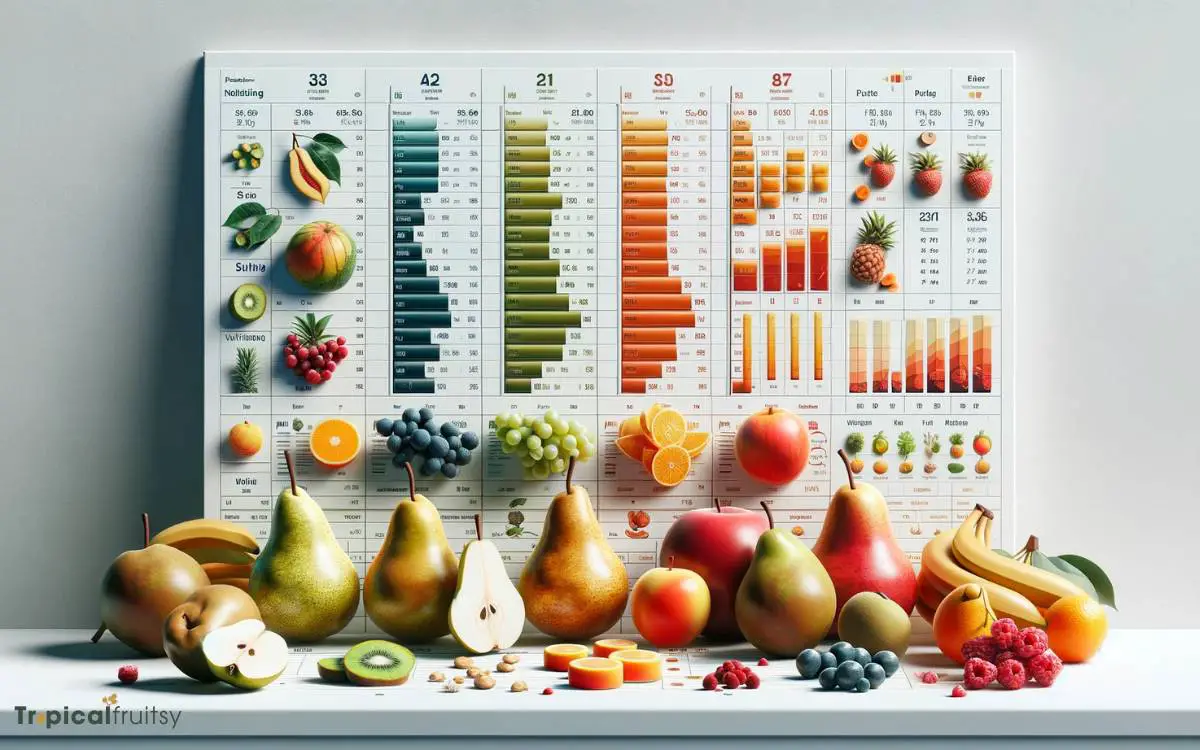
While pears are not considered tropical fruits, their nutritional profile is rich in fiber, vitamins, and antioxidants, making them comparable to many fruits grown in tropical climates.
Pears provide essential nutrients that are vital for maintaining a balanced diet and can easily rival their tropical counterparts in health benefits.
- Dietary Fiber: Pears are an excellent source of dietary fiber, which is crucial for digestive health and can aid in weight management.
- Vitamin C: Like many tropical fruits, pears contain vitamin C, an antioxidant that supports immune function and skin health.
- Potassium: They also offer a good amount of potassium, which is important for heart health and muscle function.
With their impressive nutritional offerings, pears hold their ground against exotic fruits. This leads us into the next section, where we’ll debunk common myths surrounding pears and their place in the fruit hierarchy.
Is Pear Considered a Non-Tropical Fruit?
Yes, pear is considered a non-tropical fruit and is commonly found in temperate regions. It belongs to the non-tropical fruits list, along with apples, cherries, and peaches. The pear tree requires a cold winter dormancy period for the fruit to develop properly.
Debunking Common Myths
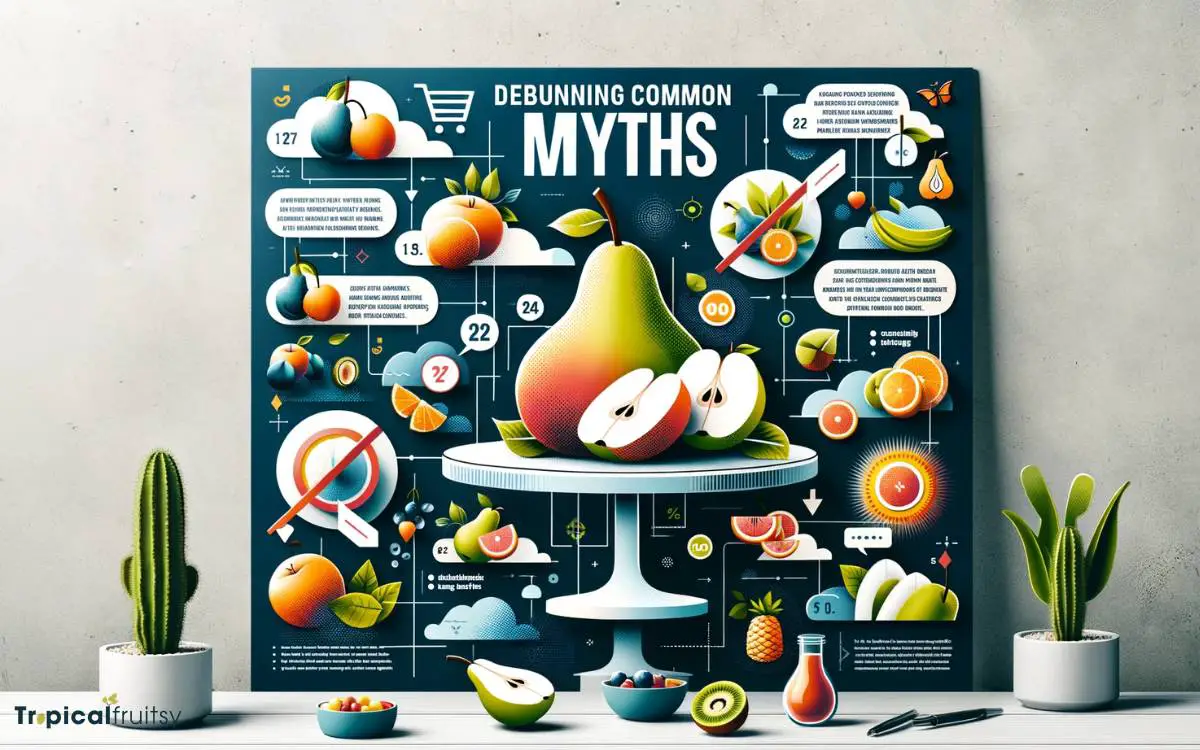
Despite common misconceptions, pears are not classified as tropical fruits, but rather as temperate-zone fruits suitable for cultivation in cooler climates.
This distinction is critical for agricultural purposes and understanding the environmental needs of pear trees. Pears thrive in regions with cold winters and warm summers, which are necessary for their growth cycle and fruit production.
To further clarify, here is a table contrasting pears with typical tropical fruits:
| Feature | Pears | Tropical Fruits |
|---|---|---|
| Climate | Temperate | Tropical |
| Winter Requirement | Chilling needed | No frost |
| Growth Cycle | Dormant in winter | Year-round growth |
| Typical Regions | North America, Europe | Southeast Asia, Latin America |
Understanding these distinctions is essential for proper cultivation and appreciation of the diverse fruit classifications.
Conclusion
In the tapestry of fruit cultivation, pears emerge as temperate staples, distinct from the sun-kissed children of the tropics. Their roots entwine with cooler climes and histories far-flung from equatorial embrace.
Nutritional paragons, they stand shoulder to shoulder with their tropical kin, yet myths crumble under the weight of botanical truths.
The pear, a symbol of autumnal bounty, remains an emblem of temperate regions, a testament to the diversity and adaptability of nature’s offerings.






